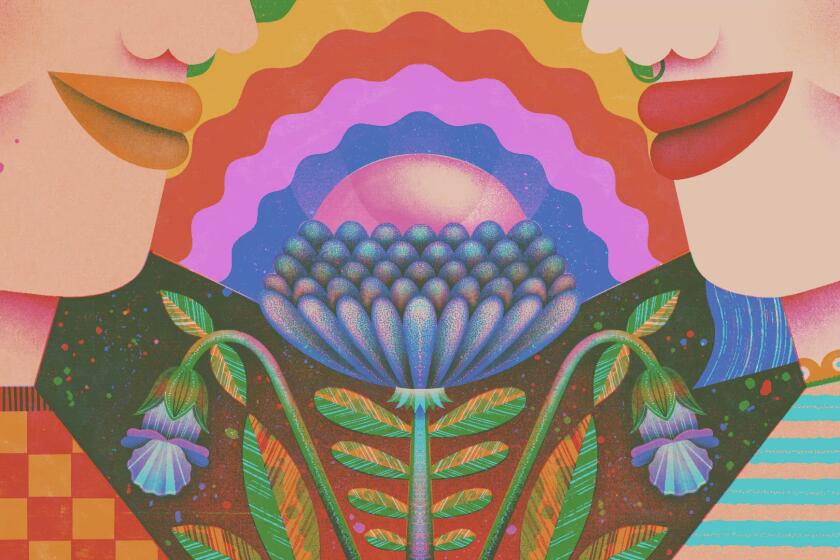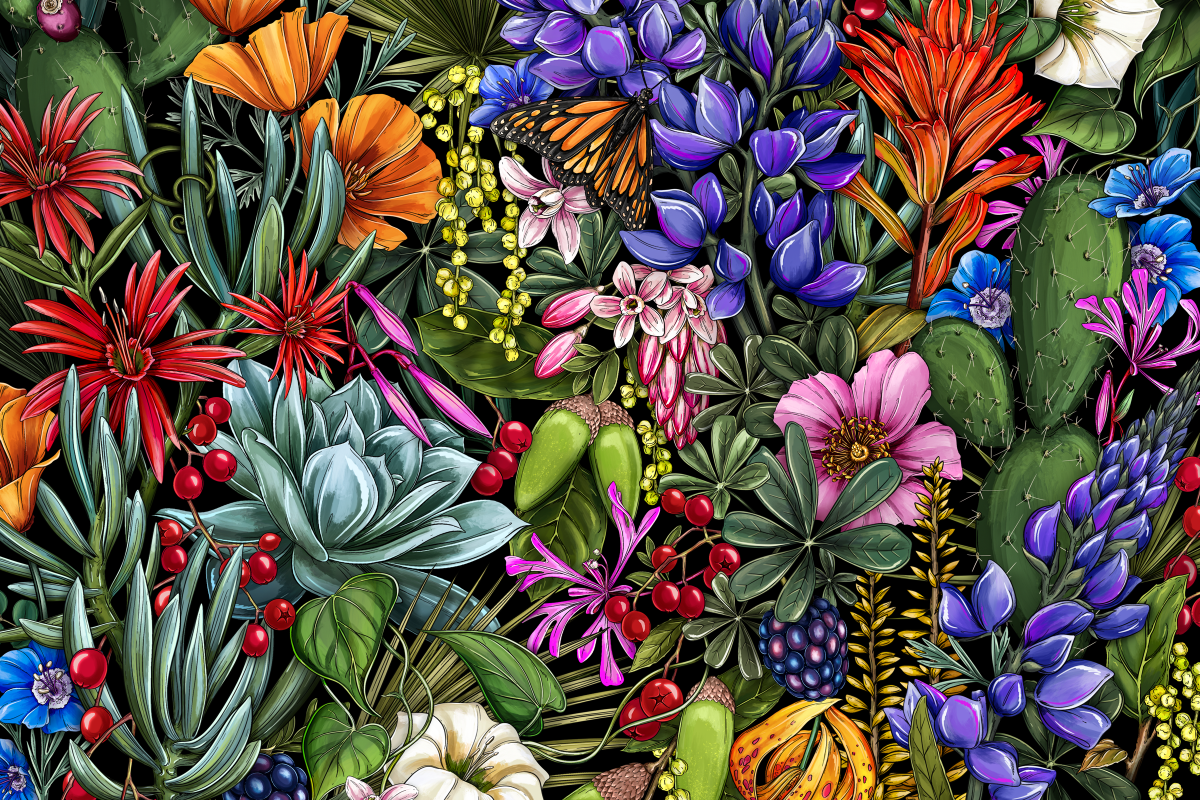
12 can’t-miss nurseries for people who love SoCal’s fragrant native plants
- Share via
Slowly, but as surely as the sun will rise, our Southern California landscape is changing. Recent rains notwithstanding, water is becoming too precious a commodity to use on irrigating huge swaths of thirsty shrubs and residential lawns, especially when those lawns get very little use.
Still, no one wants to see a Southern California covered in gravel or artificial turf. If anything, we need more cooling shade in our urban neighborhoods, as well as flowering shrubs and perennials to provide shelter and food for the insects who pollinate our food and the birds who need those bugs and plants to survive. We want fragrance in our yards, a diversity of plants and, of course, of course, we must have beauty. (Cue the eye-popping dance of California wildflowers.)
Which is why interest in drought-tolerant native plants has been picking up steam over the last decade. Native trees like oaks, elderberry, sycamores and Desert Museum palo verde (Cercidium ‘Desert Museum’) provide abundant shade as well as beauty. Native shrubs like toyon and coffeeberry create beautiful green hedges that shelter and feed birds. Buckwheat and ceanothus provide gorgeous blooms that nourish pollinators. Salvias like white sage and the thick magenta spires of hummingbird sage are factories of fragrance.
With their diversity of flowers, seeds and smells, native plants can be just as beautiful — and far more wildlife-friendly — than the imported ornamentals we’ve grown so used to in Southern California. If you need a living privacy screen, why plant a nonnative species when you can have a dense, fragrant, evergreen laurel sumac hedge whose flowers and berries will attract and feed a multitude of critters?
California native plants have many pros, but their potent scents are the biggest draw of all. Gardening experts share the most fragrant native plants.
Clearly, though, there’s a lot to learn with this new way of landscaping, which is why we’ve compiled this list of nurseries that focus on native plants. These are the places where you can explore, learn and eventually buy the plants you need. Even if you’re starting small and just want to create a little native plant habitat on your side yard or patio, these are the nurseries that can best help you achieve your goal.
Most of the nurseries listed here are retail shops, devoted to residential landscapes, but if you have a big project coming up, there are wholesale nurseries that can provide the native plants developers need for parks, for instance, or commercial landscapes — as long as they get adequate notice.
Most wholesale native plant nurseries are focused on supplying retail nurseries or restoration work, so they don’t keep a large inventory of plants that would allow them to quickly supply a big commercial or government project, said Evan Meyer, executive director of the Theodore Payne Foundation, which recently partnered with the Audubon Center at Debs Park to expand its wholesale Los Nogales Native Plant Nursery.
Theodore Payne already grows native plants for its retail nursery and for habitat restoration projects, but the foundation wants to see more resources available for contractors and designers who typically create landscapes based on whatever plants are easiest and cheapest to find.
What are California native plants? How do you add them to your garden to create habitat? Come explore native plants at L.A. Times Plants’ Festival of Books booth.
It’s going to be a learning process, Meyer said. Landscapers and contractors need to start working with native plant growers at the beginning stages of their projects, so the nurseries will have time to grow the quantity of plants needed when they’re ready to plant.
“Our goal is to shore up the availability of [native] plants that work well in landscapes,” Meyer said, “but we also need landscapers to realize the impact they can have by choosing the right plants and coming to us early, so we can create habitat for all our urban landscapes, using the plants [that] birds and other wildlife need to survive.”
Los Nogales Native Plant Nursery won’t be selling to homeowners or other retail customers, but it may occasionally have enough native plants to sell or give away during special events, Meyer said.
Fremontia Horticultural in Ontario has 75 acres of mostly native plants and is entirely focused on large wholesale projects. But other wholesale nurseries offer some guidance to retail customers who seek them out online. El Nativo Growers in Azusa, for instance, doesn’t sell to individuals, but its website lists the dozen or so retail nurseries that do sell its plants and encourages people to order what they want through them. Moosa Creek Nursery in Valley Center has similar recommendations, but it also permits people to order small quantities of plants online and then pick them up and pay for them at a participating nursery.
Barbara Chung fell in love with native plants, but she didn’t have a yard. So she created a habitat garden in pots on her tiny townhouse patio in Santa Monica.
A few nonprofits, such as the Mojave Desert Land Trust, devote most of their energy to collecting seeds and growing plants native to their regions for restoration work, but once or twice a year they open their doors to the public for popular plant sales. If you’re interested in the plants these organizations grow, you can become a member to support their work, or at least get on their mailing list for notifications about upcoming events.
Luckily there are at least a dozen options in Southern California for people who don’t want to wait for those relatively rare events. Check our list of native plant retail nurseries below, where you should be able to find a wide selection of the plants you need for an entire turf removal project at home or for just filling some pots on your patio to nourish the hummingbirds.
One caveat: Native plant nurseries tend to have a limited number of choices during the hottest months of the year — typically May through September — and some even close down during that time. That’s because many native plants go dormant in the heat of summer. A few, like milkweed, can be planted during the warm months, but typically it’s best to plan your plantings for the late fall or winter, so the plants can slowly develop strong roots during SoCal’s cool and historically rainy season.
Note too that many native plant nurseries have demonstration gardens where you can see what those nondescript plants in 4-inch pots or gallon containers will look like when they’re grown. Take a few minutes to wander the grounds and get acquainted with the aromatic diversity and beauty of California’s original plants — then start your own little habitat oasis and revel in the birds and butterflies that come to call.
As the drought continues, Californians are tearing out their lawns. Here’s a DIY guide to killing grass to prep for a drought-tolerant landscape.
And a final insider tip: Many nonprofit retail and wholesale native plant nurseries rely heavily on volunteers, so inquire about whether they need help. At a minimum, a few hours of volunteer work can give you deeper insights into how to grow and maintain native plants. And some places, like the Santa Monica Mountains Fund‘s Rancho Sierra Vista native plant nursery in Newbury Park, go a step farther and “pay” volunteers by giving them three nursery plants in exchange for working at least two hours between 9 a.m. and 2 p.m. on Fridays and Saturdays tending to native plants that will help restore habitat in the fire-ravaged Santa Monica Mountains.
Fresh air, new knowledge, free plants and making a difference? That’s a combo that’s hard to beat.
For the record:
2:02 p.m. April 14, 2023The opening days for all three Plant Material shops are Tuesday through Sunday, not Thursday through Sunday as originally reported.
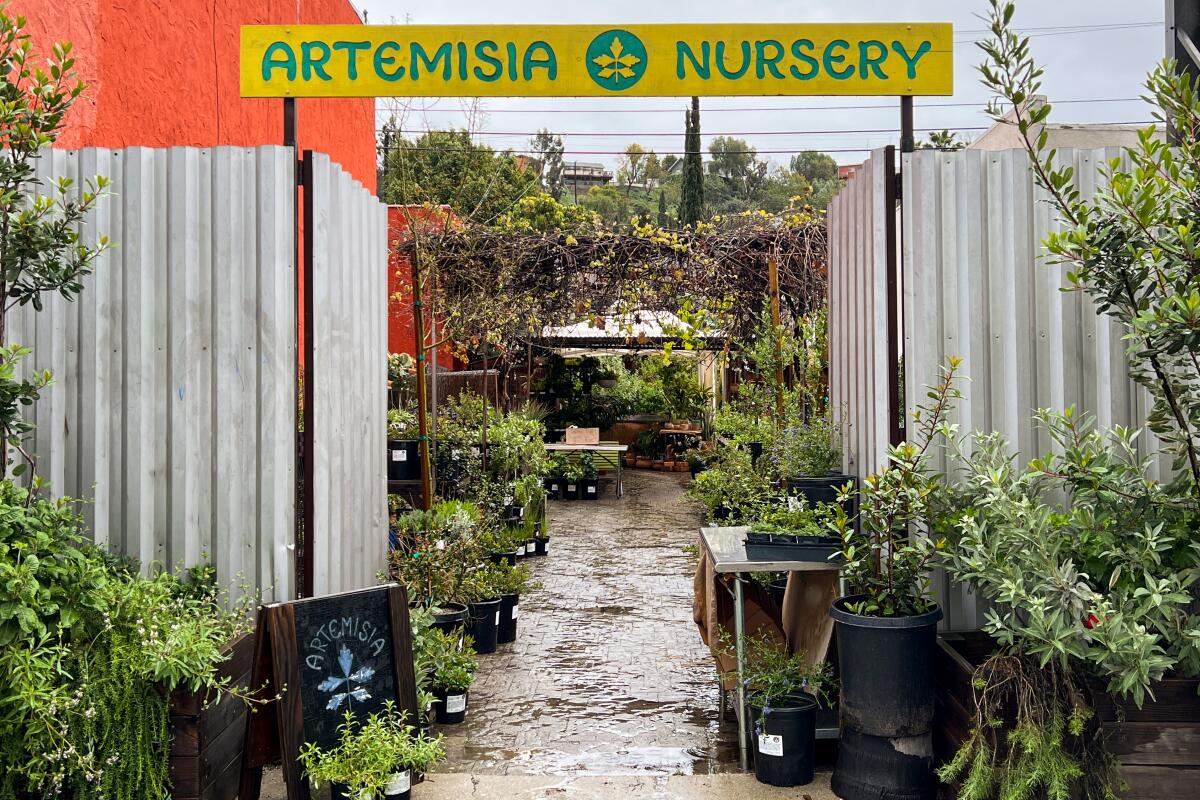
Artemisia Nursery
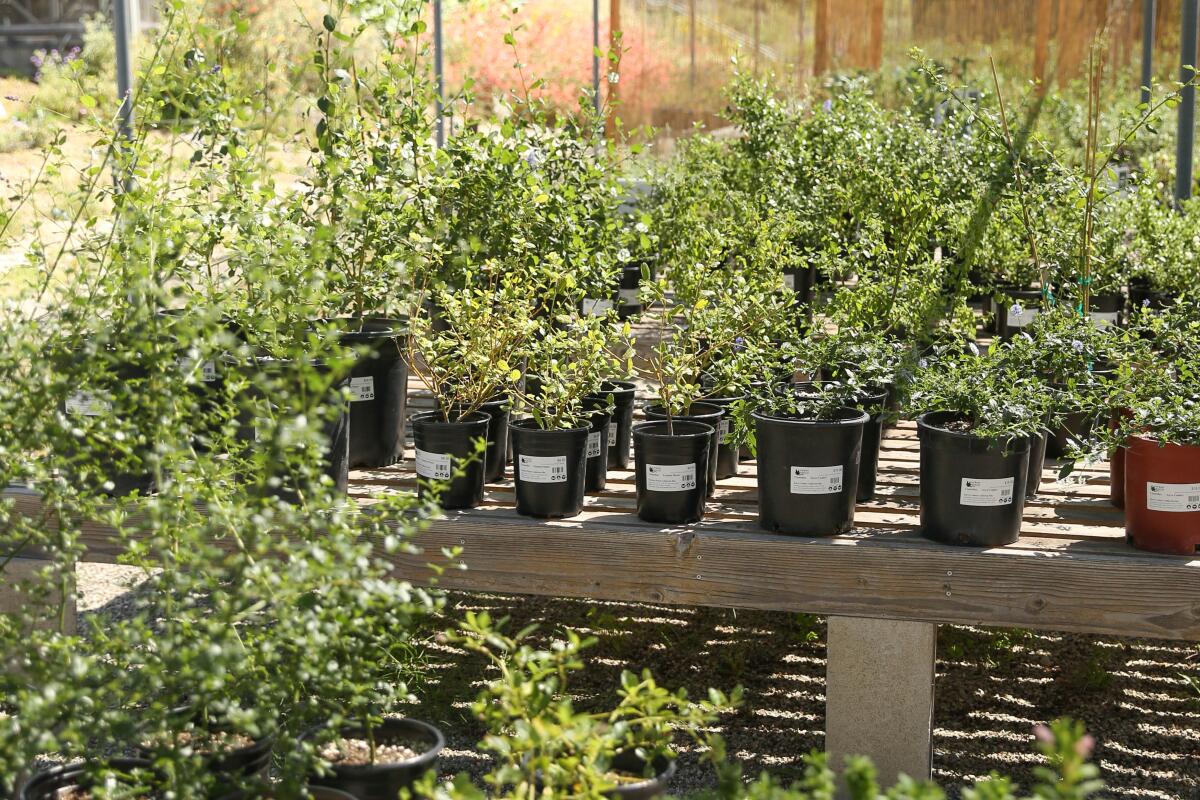
Grow Native Nursery at California Botanic Garden
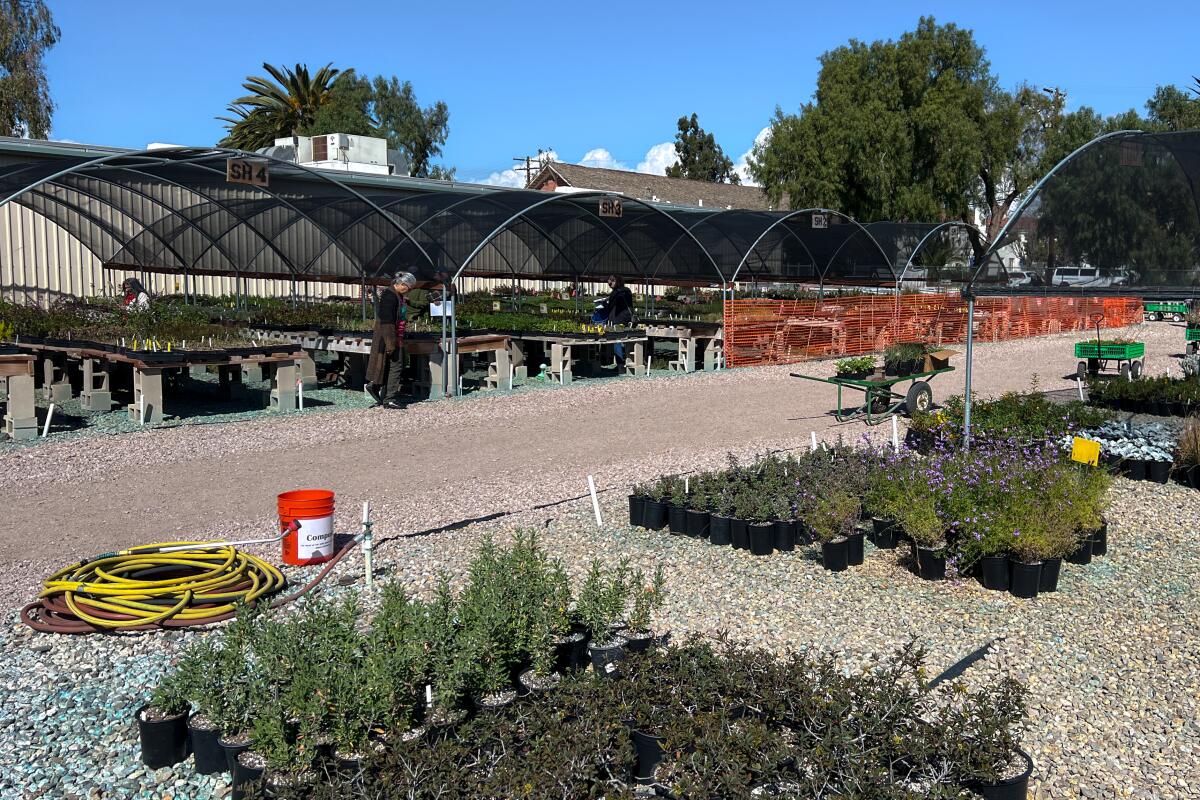
Growing Works Nursery
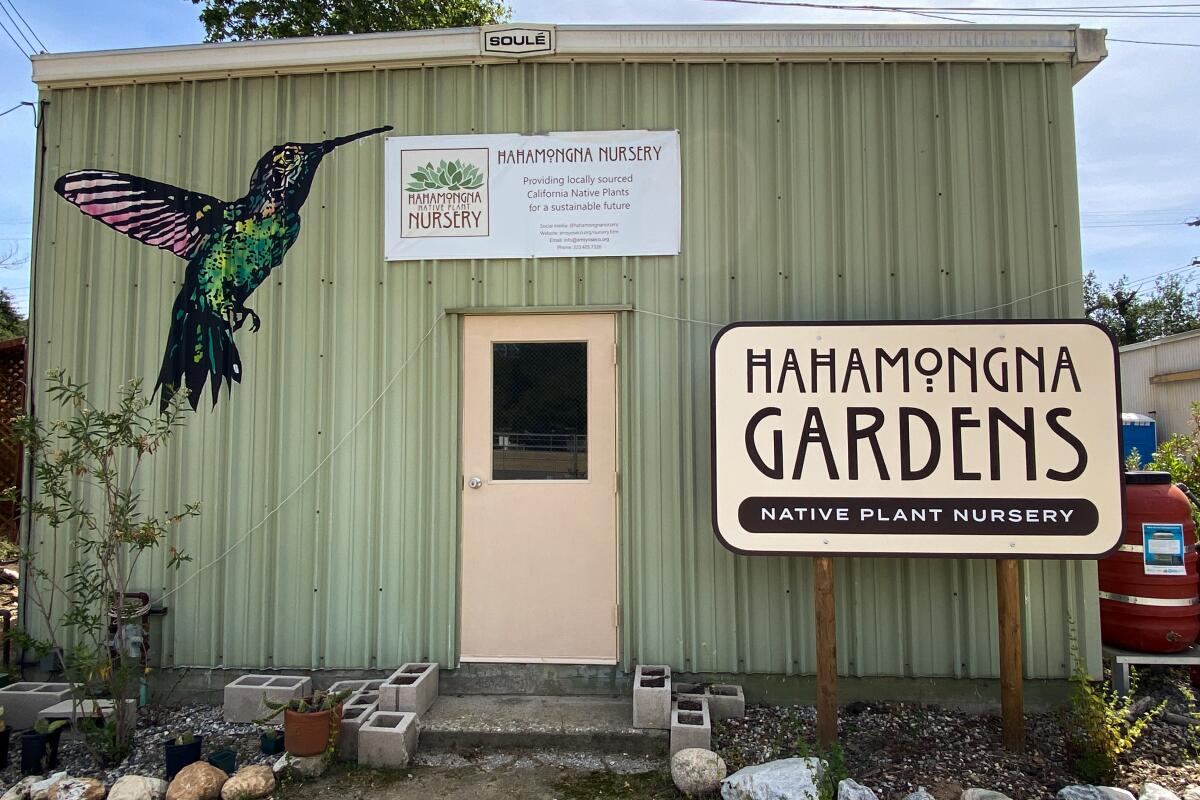
Hahamongna Native Plant Nursery
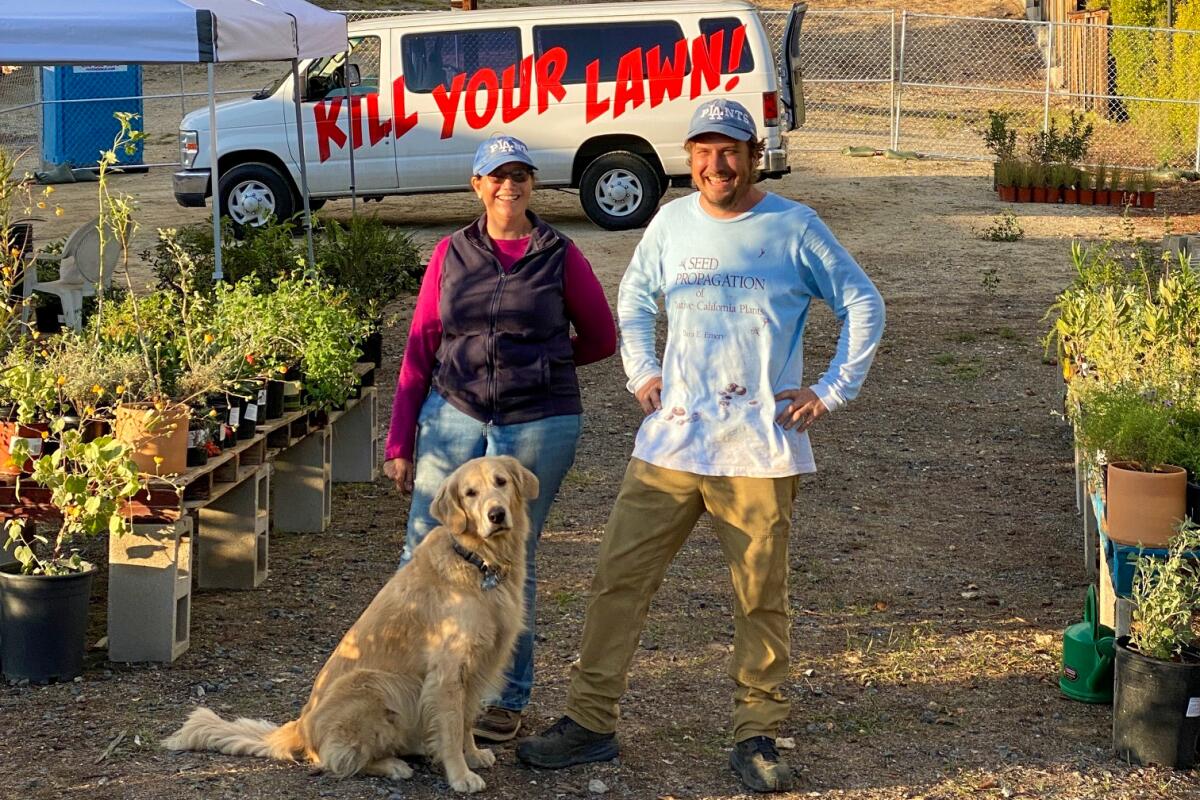
Hardy Californians
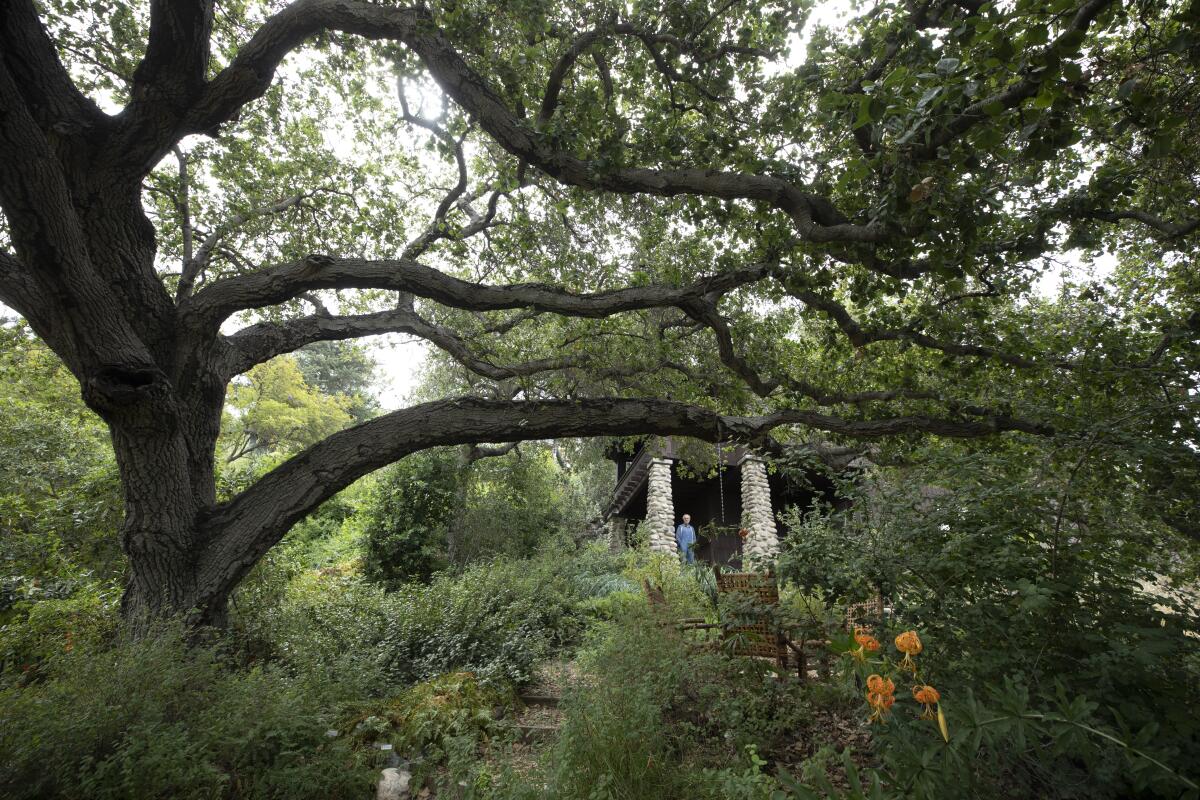
LA Native Plant Source
Schwartz collects seeds and bulbs from the more than 150 species of native trees, shrubs, perennials, grasses and wildflowers that grow around his Highland Park home and sells both seeds and plants online for curbside pickup between October and May. All the proceeds from his sales are donated to the Theodore Payne Foundation, which featured his garden in its annual Native Plant Garden Tour in 2022. Insider tip: Schwartz is also a marvelous writer whose regular blog weaves tips for growing native plants into humorous and thoughtful prose, so do yourself a favor and subscribe to his newsletter.
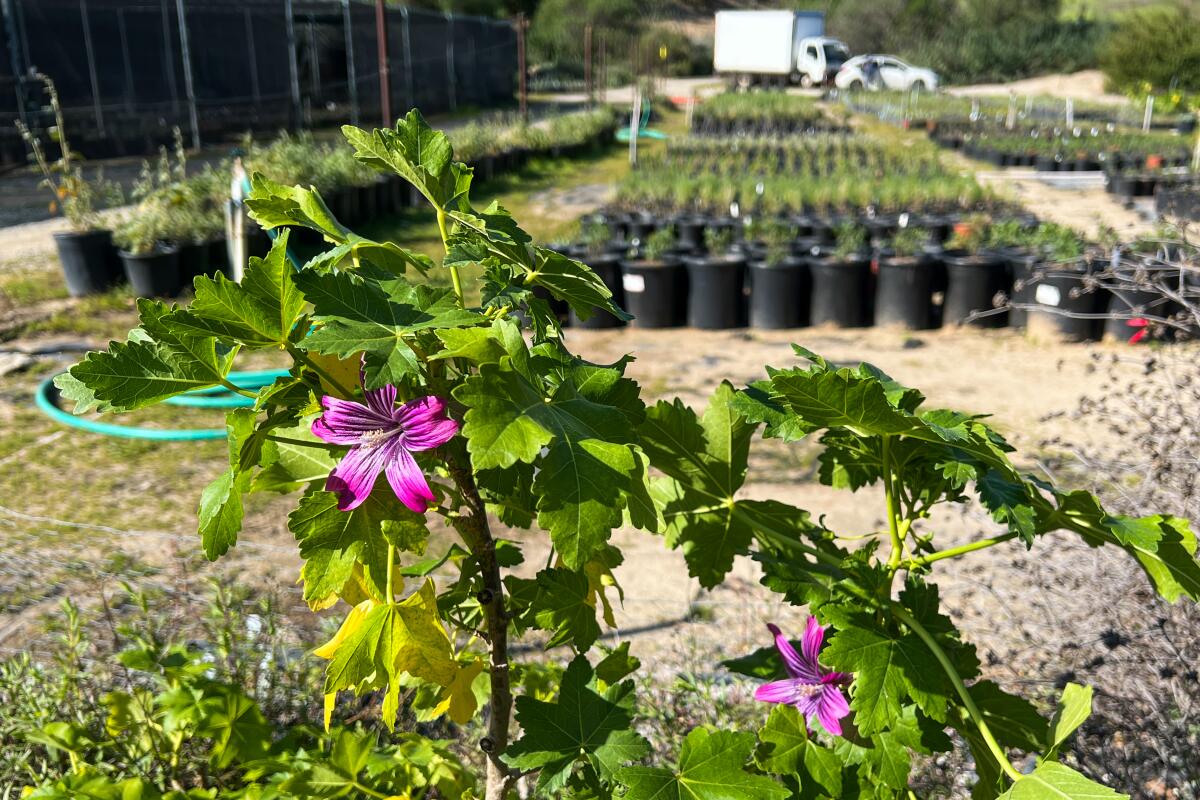
Matilija Nursery
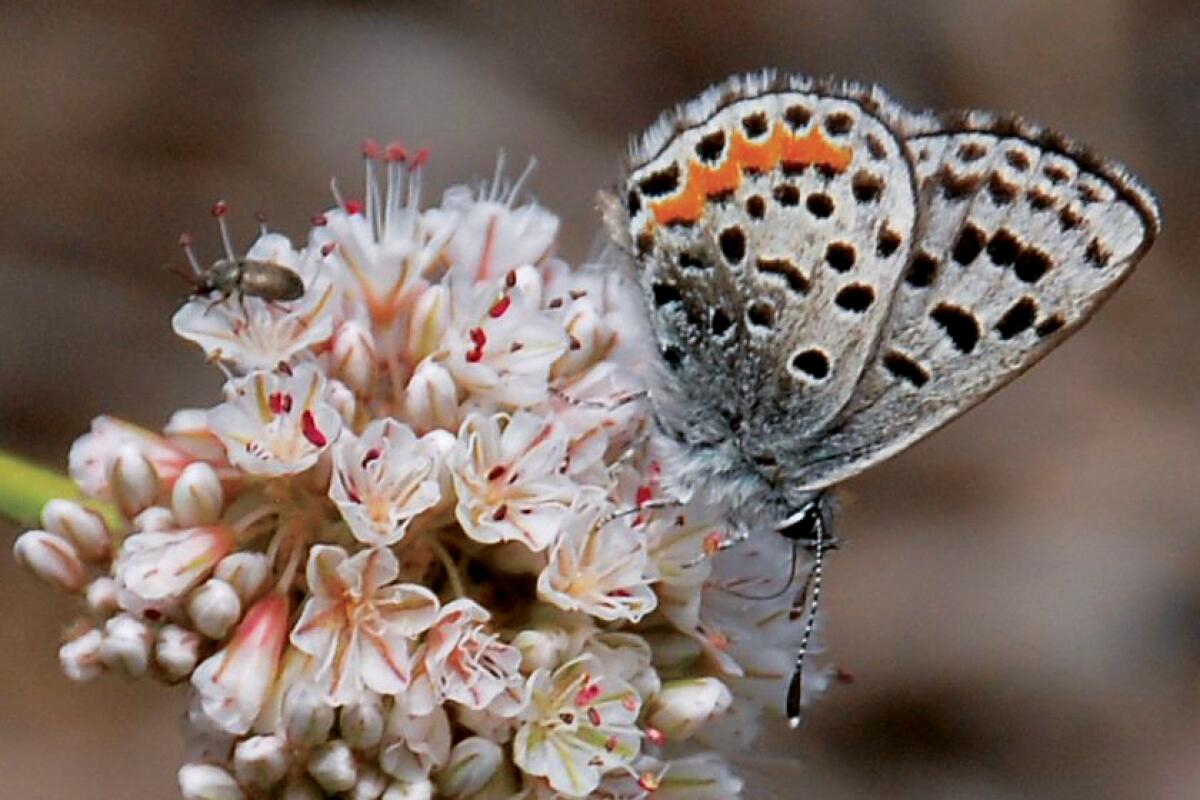
Palos Verdes Peninsula Land Conservancy Native Plant Nursery
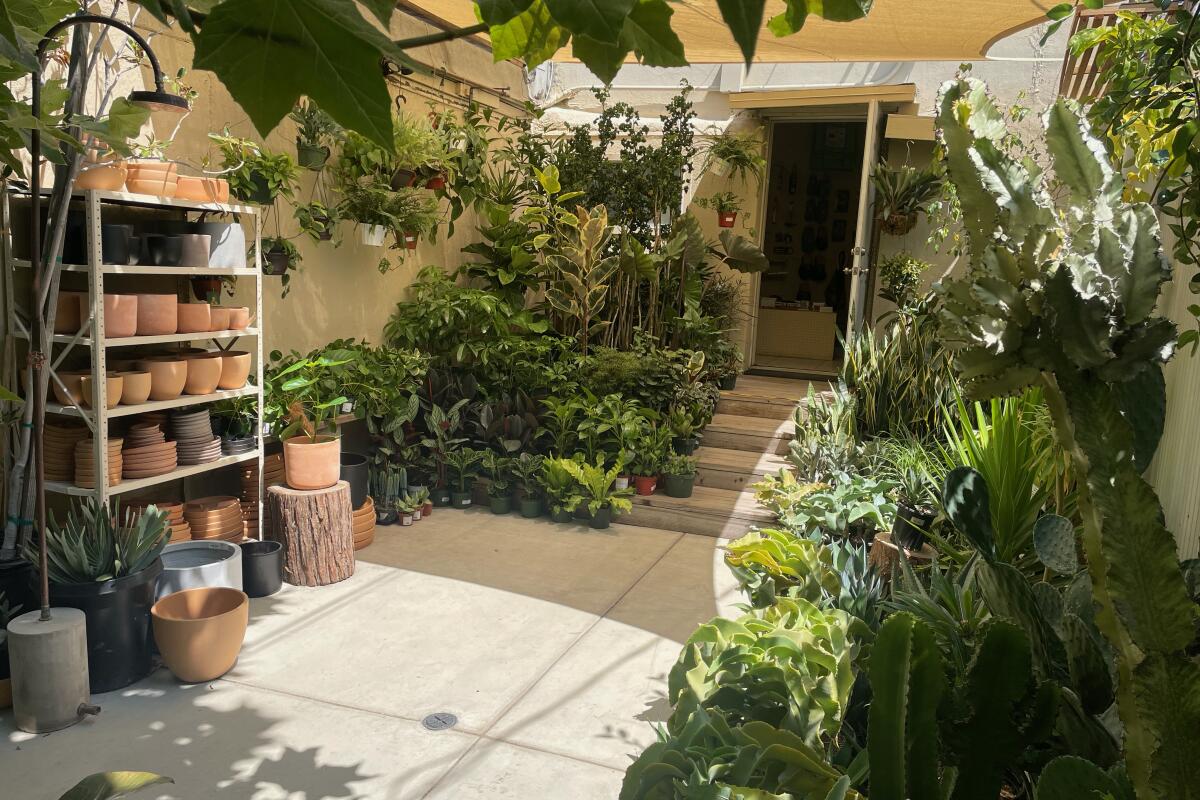
Plant Material
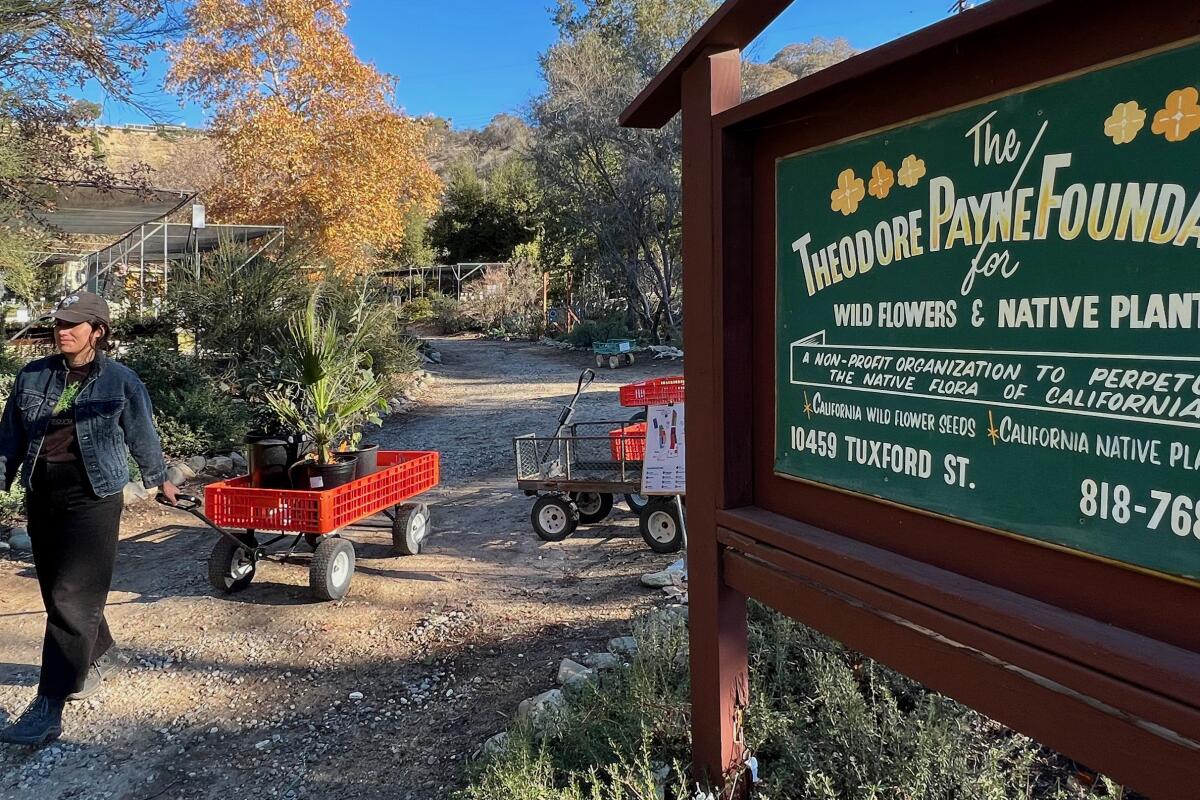
Theodore Payne Foundation Nursery

The Nursery at Santa Barbara Botanic Garden
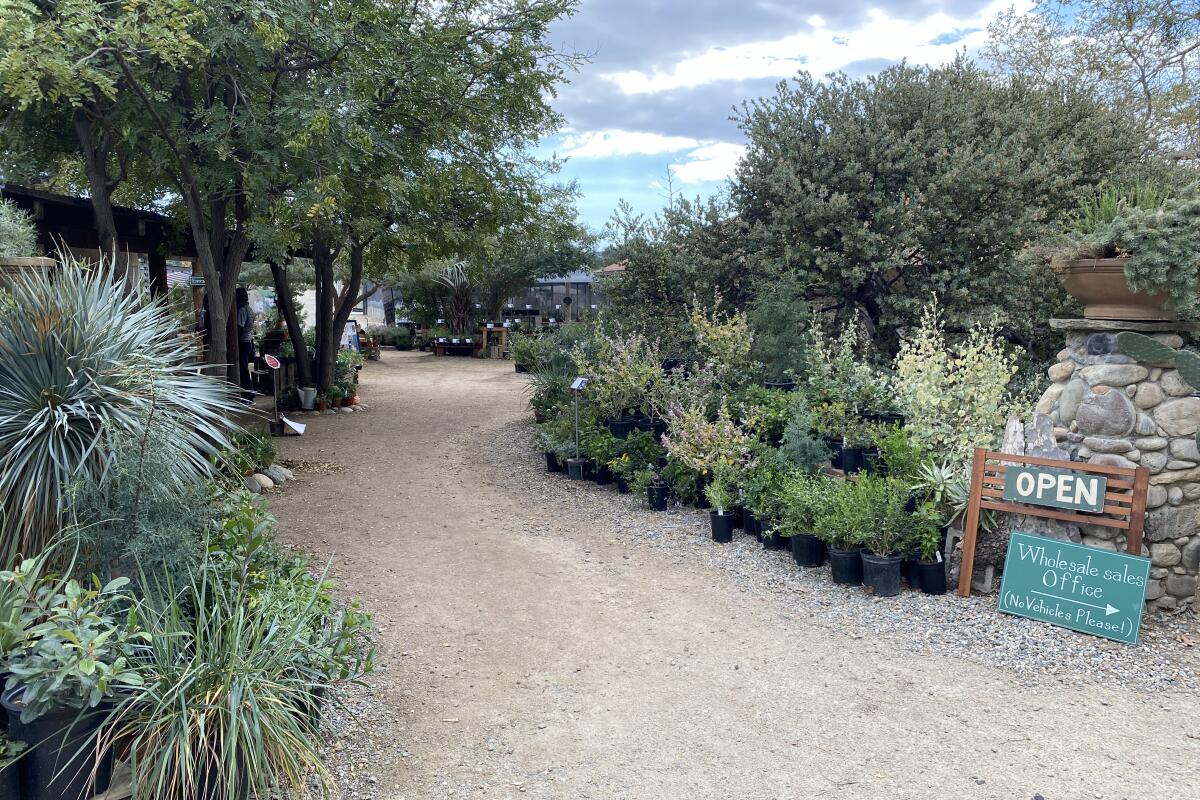
Tree of Life Nursery
Sign up for The Wild
We’ll help you find the best places to hike, bike and run, as well as the perfect silent spots for meditation and yoga.
You may occasionally receive promotional content from the Los Angeles Times.
